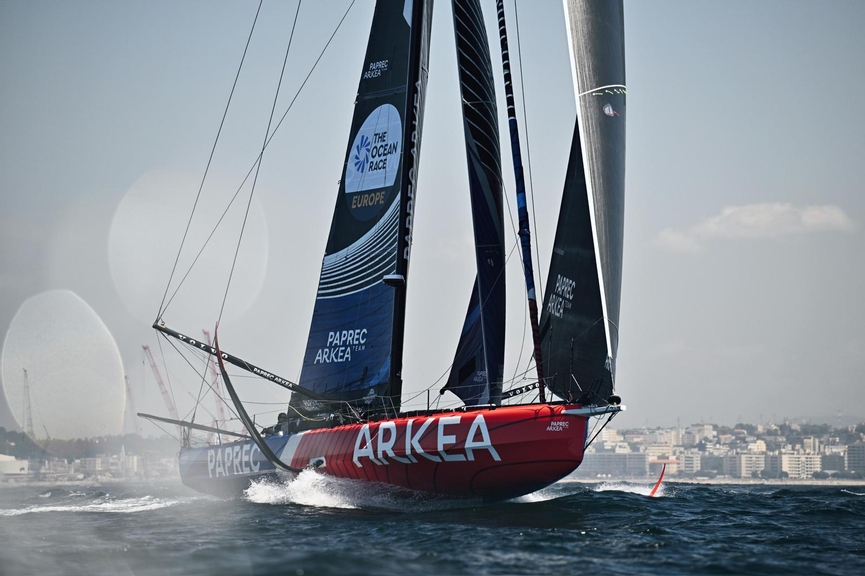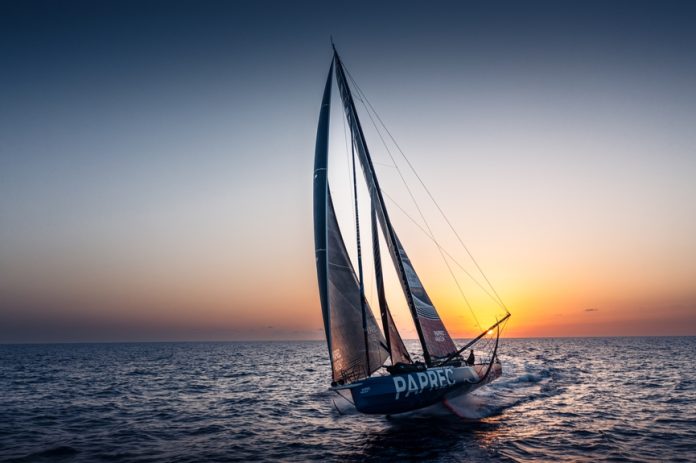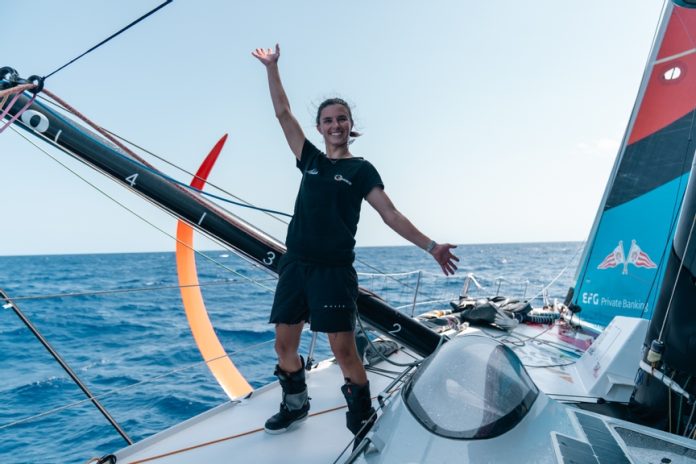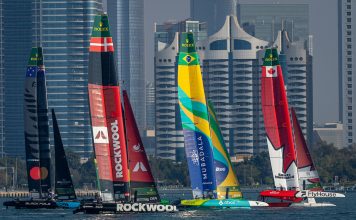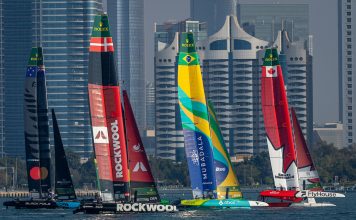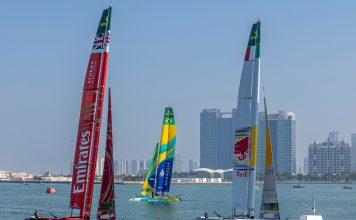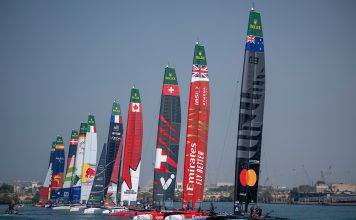Sunshine, spinnakers, and a flying start
Portsmouth was sparkling when seven IMOCAs lined up off Cowes on 17 August. It was a classic Solent send-off – blue skies, spinnakers filled, and crowds lining the shore. The fleet charged down the historic Royal Yacht Squadron line, the same start used for the first Whitbread Round the World Race back in 1973.
The first prize was the Needles Scoring Gate, and once again Paul Meilhat’s Biotherm struck first. Two more points added to their tally, Paprec Arkéa picking up the single behind them. It meant Biotherm had a flawless record across both Kiel and Portsmouth scoring gates. Early control was theirs.
But if Meilhat hoped for a smooth repeat of Leg 1, Biscay had other ideas.
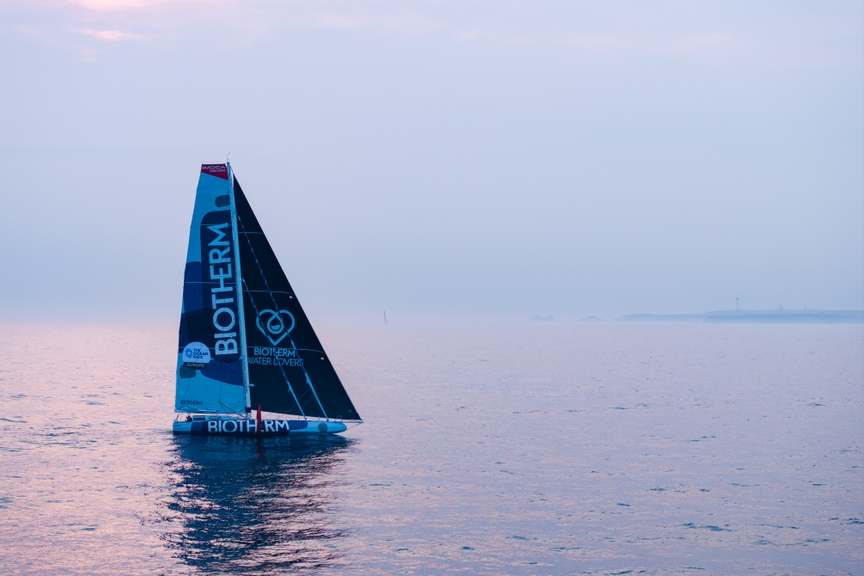
From flying to parked at Ushant
The first night was brutal and fast. With 20-plus knots of breeze from the east, the IMOCAs ripped across the Channel, spray flying, boats hitting speeds well above routing predictions. By midnight, Biotherm led with a 40-mile spread back to Team Amaala.
Then it all collapsed.
A windless zone off Ushant pulled the handbrake on the fleet. The leaders, first to enter, stalled. From 40 miles apart the fleet compressed to five. Suddenly Canada Ocean Racing – Be Water Positive, led by Pip Hare, were in front. For a team still learning the pace of the IMOCA circuit, it was a breakthrough moment.
Others paid dearly. Paprec Arkéa tried the southern route through a tidal channel, a bold move that could have opened 20 miles. Instead, the wind died and they missed the gate. Forced to tack back, Yoann Richomme’s crew fell from leaders to tail-enders. “We went from first to last,” Richomme admitted.
The reset left crews drained but sharpened the contest. The race south was now wide open.
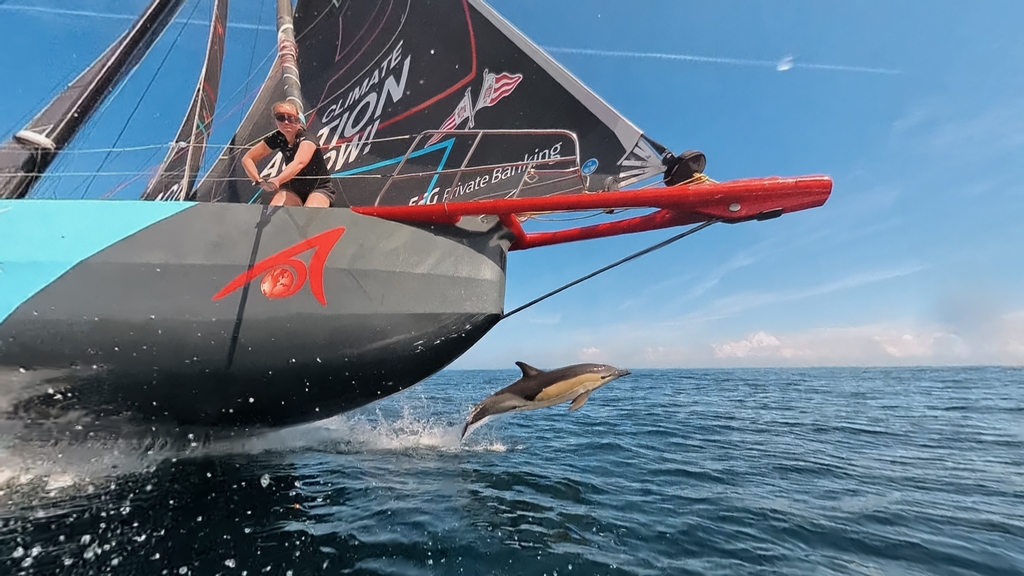
A drag race across Biscay
When the breeze filled again, it became pure speed. Holcim-PRB, freshly rebuilt after Leg 1 damage, found new life. Rosalin Kuiper’s crew traded the lead with Biotherm through the night. Malizia, Canada, and Paprec all stayed close, rarely more than five miles behind.
For fans, it was offshore racing at its best – boats in sight of each other, every gybe and trim magnified.
“Every minute counts here – there’s no room for mistakes,” said Kuiper.
The duel between Biotherm and Holcim had extra spice. Amélie Grassi on Biotherm found herself overtaken by her husband Alan Roberts on Holcim – only to take the place back later. “A great day,” she laughed.
Behind the lead battle, Allagrande Mapei tried a bold split, tacking away early to set up for Cape Finisterre. It was a move that could only pay off if the leaders were trapped. Instead, Biotherm and Holcim punched through, leaving Mapei chasing.
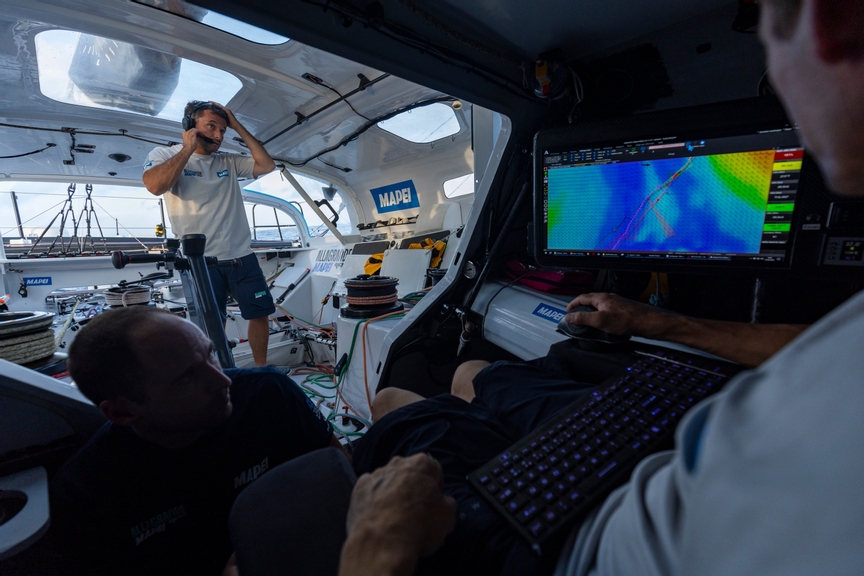
© Pierre Bouras / Allagrande MAPEI / The Ocean Race
Cape Finisterre – the decisive shift
Cape Finisterre has ended many races, and this time it decided the first half of Leg 2. As the fleet approached, Biotherm were the first to line up with the new breeze on the western side. It was the move that mattered. Meilhat’s team stretched and never looked back, holding a slim but vital margin into the mid-leg scoring gate.

Paprec Arkéa, having fought back from last, found a burst of speed. They slipped past Malizia and Holcim in the final hours to grab second into Porto-Matosinhos. “We had a wonderful night catching up,” Richomme said. “Everything went right for us.”
Holcim claimed third, their first points of the event. For a team who had been on the dock repairing while others raced Leg 1, it felt like vindication. “We’re very happy to be back in the race,” said Kuiper.
For Biotherm, it was perfection. Eighteen points from eighteen available. A record few would have dared predict at the start.
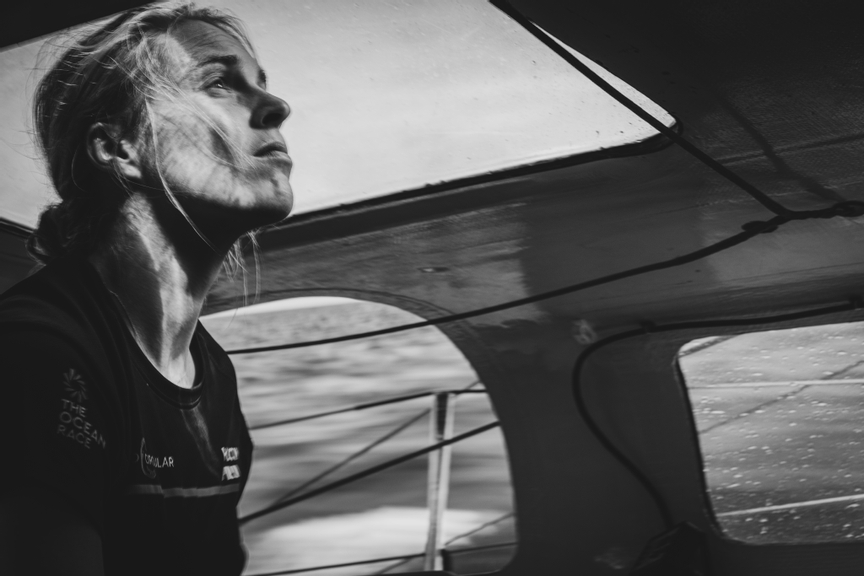
Porto’s surreal pit stop
The Porto-Matosinhos fly-by was unlike any stopover The Ocean Race has ever staged. Boats crossed a finish line, scored full leg points, then tied up for three hours before restarting. Crowds cheered, music played, sailors wolfed down food and did interviews – then climbed back aboard to go racing again.
“It was really strange,” said Meilhat. “Normally you cross the line and celebrate. Here you had to stay focused, because in three hours it starts again.”
Malizia’s Will Harris admitted the format was tough. “Seeing Biotherm set off as we were arriving was hard. But everyone’s raring to go again.”
For the backmarkers it was bittersweet. Amaala limped in overnight, hours behind, spirits dented. “We’ve been stuck in no wind while others enjoyed Porto,” joked skipper Alan Roura. “Please, drink a coffee for me!”
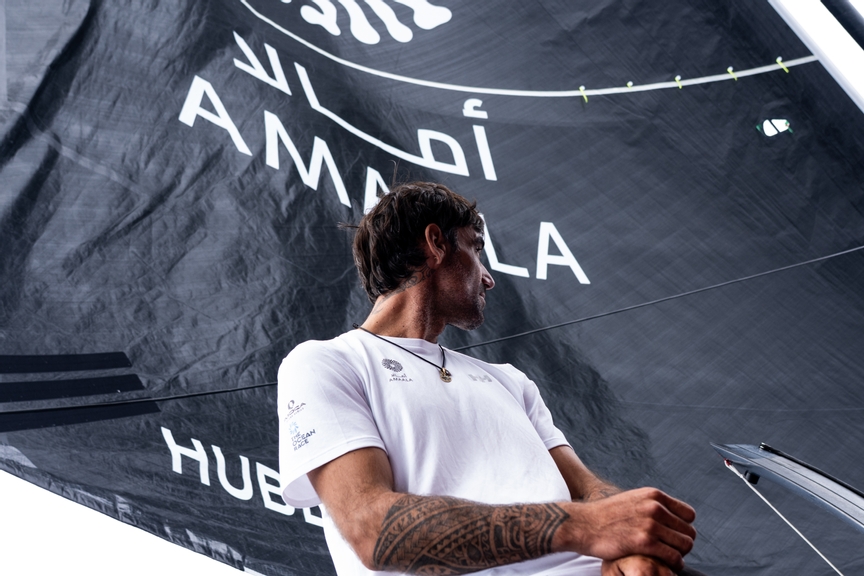
Portugal reshuffles the pack
The restart delivered fireworks. Downwind conditions poured speed into the fleet and Biotherm’s weakness showed. “Our boat isn’t made for these angles,” Meilhat had warned, and he was right. Paprec Arkéa roared past during the night, taking the lead for the first time this leg.
Holcim closed too, trailing Biotherm by just five miles. Suddenly the invincible leader looked vulnerable. Richomme called the conditions “super-fast” and spoke with satisfaction: “It had been a long time since we got back to them.”
Behind, Malizia fought to reset, still within striking distance. Canada and Mapei chased hard from further back. Amaala, well adrift, were left hoping Gibraltar might reshuffle things again.
All eyes on Gibraltar
From the Gulf of Cadiz the race funnels towards the Strait of Gibraltar – a notorious bottleneck where the Atlantic squeezes into the Med. For the leaders it promises one more turning point before Cartagena.
Biotherm may still top the table, but Leg 2 has shown they are not untouchable. Paprec Arkéa’s resurgence, Holcim’s revival, and Canada’s breakthrough all underline that this race is still wide open.
As Kuiper put it, “Every minute counts. There’s no room for mistakes.” And with Gibraltar looming, the smallest mistake could still decide everything.








